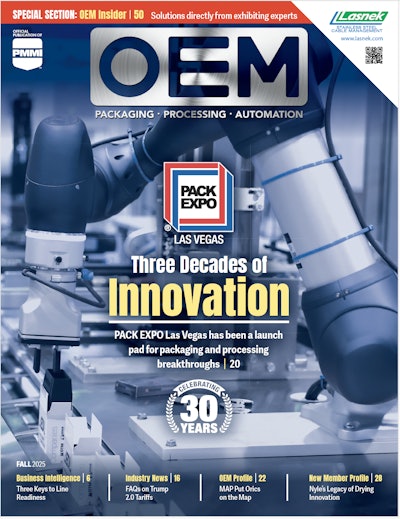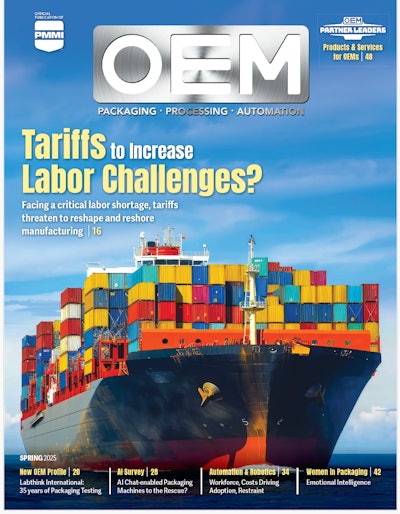To gain the full benefit of an overall equipment effectiveness (OEE) program, it’s imperative that every piece of equipment on a given production line is fully integrated and feeding information to OEE software and dashboards. Far too often, however, marking and coding systems are not supplying adequate amounts, if any, data for OEE analysis. This makes it difficult for operations staff to pinpoint inefficiencies quickly and take corrective action, or it leads to gaps in analysis, such as unreported micro-stops that make it difficult to find the root cause of problems.
In the context of inkjet coders and print-and-apply labelers, OEE can be used to determine whether these machines are operating as efficiently as expected. When set up and configured properly, OEE is a powerful tool for keeping marking systems on track year after year.
The importance of keeping marking systems healthy extends beyond the equipment. Marks often hold information critical for internal traceability and the production process itself. Many operations rely on marks for product identification, specs, barcodes, and other information for product safety and external traceability.
An unreadable barcode or a misapplied label can result in materials, finished products, or pallets being misrouted, incorrectly priced, improperly managed, or stuck in expensive holds or rejections as they move through the supply chain to partners or retailers. Such costs are hard to quantify after products leave the plant, but they are also not something you would wish on your worst enemy.
Once printing and labeling equipment is integrated with the OEE platform of your choice, the impact of poor-performing or unreliable equipment becomes apparent. In many ways, reliability impacts OEE more than any other single factor. Some examples that underscore the importance of reliability in the context of OEE include:
- Availability: When marking breaks down or clogs, the availability metric falls.
- Performance: Outdated, slow, or manually controlled printing technology that requires more time for message changeovers hits performance metrics but slows down the entire line.
- Quality: As discussed above, poor quality marks can impact an operation’s bottom line as products move through the supply chain.
Faster changeovers boost output
Haley Manufacturing, a packaging and bagging equipment supplier for delicate fruit products, found that hand labeling slowed production processes because workers couldn’t keep up with automated equipment. However, moving to a 1:1 inkjet printer-to-bagger configuration proved to be a less-than-ideal solution. Each time a lot or packed-on date changed, an operator had to update each printer separately. For an operation running 30 baggers, for example, that meant 30 manual changes and a lengthy production delay – a significant ding to OEE metrics.
Looking for a better solution, Haley opted for the MPERIA OEM controller platform from Matthews Marking Systems to centrally manage integrated thermal inkjet (TIJ) printers. This universal controller features an open architecture, offers a common API with support for multiple printers and labelers, and drivers for integrating third-party equipment such as vision systems, scanners, and scales.
“We’re controlling twenty to thirty print heads from a single interface,” said Jeremy Briskey, service manager for Haley. “This makes it way easier for the operator and has definitely helped our customers out a lot.”
A marking and coding system with an integrated controller that can automate data flow across systems makes it easier to feed data into OEE dashboards. The data must be adaptable to the type of OEE system used at each facility and provide enough information to support analysis to lead to actionable fixes for ongoing OEE improvements.
![Oem 0624 Tij Mounted In Machine[90]](https://img.oemmagazine.org/files/base/pmmi/all/image/2024/06/OEM_0624_TIJ_mounted_in_machine_90_.665f23f9463b3.png?auto=format%2Ccompress&q=70&w=400)

















